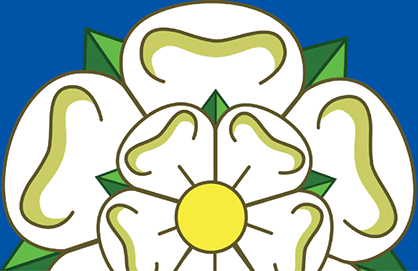Potted Yorkshire History
Yorkshire has had a fascinating, roller-coaster history, characterised in the thousand years or so between the departure of the Romans and the end of the Civil War by short, sharp upheavals followed by long periods of recovery and development.
Yorkshire's Stone Age hunters and gatherers would have found the area covered in forests and full of wildlife. From a few thousand years BC the forests began to be cut down for farming, before the Bronze Age brought tools and weapons. Celtic settlers arrived in Yorkshire in around 500BC and began to group into tribes and kingdoms. By the time the Romans came, in 71AD, these comprised the Parisii in the east, and a powerful tribal coalition called the Brigantes.
The Roman forts were gradually succeeded by towns including Eboracum (York), the capital of the Roman North, the place where Emperor Constantine was Crowned, and Yorkshire's centre of gravity to this day. Though they had a substantial impact on Yorkshire's infrastructure, the Romans were gone by the 5th century and the native Britons once again established their own kingdoms, such as Ebrauc, Elmet, Dunoting and Meicen.
Next came the Anglo-Saxons together with the arrival of Christianity and the start of increased trade, though life remained largely agricultural. They were originally invited over as mercenaries to help protect the Britons of Ebrauc (northern and eastern Yorkshire) against marauding Picts, and settled in the eastern area of that kingdom called "Deywr", which they Anglicised to "Deira". Rebelling for not being paid, they declared Deira their own kingdom and proceeded to annex the local Brythonic kingdoms mentioned in the previous paragraph. In 626AD, King Edwin of Deira had founded a Kingdom with boundaries very much identifiable today as, "Yorkshire".
But then came the vikings! In 9th century, Danes landed in Deira (Yorkshire), first raiding, then settling and ruling for a century. They changed the name of the Kingdom and its capital city to Jórvík, from which the name, York, derived, and organised the territory into three areas that we know today as the North, West and East Ridings of Yorkshire. Placenames in Yorkshire, such as those ending in "by", "thorpe", "thwaite", "keld", "kirk", "ness" and, "toft" all signify Danish settlements. They interbred with the locals creating an Anglo-Danish population and language from which Yorkshire Dialect evolved. The Kingdom came to an end in 954Ad with the death of King Eric Bloodaxe and the subsequent adoption of the Wessex King, who also ruled the other parts of England.
Yorkshire folk once again became subjects of a Danish dynasty in 1016 after King Cnut completed the conquest of England by defeating the Wessex King in reprisal for his act of genocide against Danish settlers in the St Brice's Day Massacre. The dynasty came to an end in 1042 due to lack of heir and Edward The Confessor was elected King which returned Saxon rule. In attempt to regain nordic rule of Yorkshire, Harald Hardrada arrived from Norway in 1066 but was defeated by the then King of England, Harold Godwinson, himself half Danish, at the Battle of Stamford Bridge.
Almost immediately after the Battle of Stamford Bridge, William The Bastard, of Normandy, also of Danish ancestry, invaded at, perhaps England's most famous battle, near Hastings, where he defeated King Harold's exhausted troops and became King. But he soon faced a rebellion from Yorkshire that he brutally suppressed in the 'Harrying of the North', an act of genocide that resulted in the deaths of an estimated hundred thousand people. And for that, we make no apology for referring to him by the title he is recorded to have been given!
Recovering over the next few centuries, new towns, including Barnsley, Hull, Leeds and Sheffield, began to be established. The population rose, farming increased, and the monasteries sprang up. But in the 14th century Yorkshire was hit by a triple whammy of famine, the Black Death and wars with the Scots. The next century brought the Wars of the Roses between the Houses of York and Lancaster, further decimating Yorkshire's towns and population.
Another spell of recovery followed, with agriculture and trades like wool and cloth enriching the region. Henry VIII's reformation and the dissolution of the monasteries brought more chaos, and in the 1640s Yorkshire was split by the Civil War. Over the next few centuries the identity and character of Yorkshire as we know it started to emerge. As industry flourished through the 18th century, towns sprawled and transport links improved, the railways in particular bringing previously remote areas much closer together. With heavier industries like coal and steel arriving, conditions in the towns and factories worsened, though by the late 19th century improvements to the water supply and public facilities were being made. More money and leisure accelerated the growth of seaside towns like Scarborough.
The decline of traditional industries into the 20th century hit Yorkshire hard and forced it to find new ones. The Second World War brought more hardships and, afterwards, immigration shook up Yorkshire's demographics. In 1974, the reorganisation of local government caused the confusion over Yorkshire's traditional boundaries and integrity of our county that Yorkshire Ridings Society are determined to end.
Read more on "Heritage of Yorkshire"
